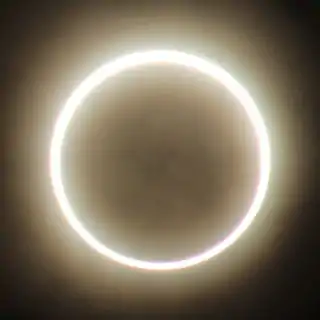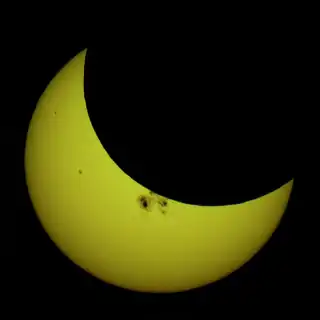Solar eclipse of June 17, 1909
A hybrid solar eclipse occurred on June 17, 1909. A solar eclipse occurs when the Moon passes between Earth and the Sun, thereby totally or partly obscuring the image of the Sun for a viewer on Earth. A total solar eclipse occurs when the Moon's apparent diameter is larger than the Sun's, blocking all direct sunlight, turning day into darkness. Totality occurs in a narrow path across Earth's surface, with the partial solar eclipse visible over a surrounding region thousands of kilometres wide. This event was a hybrid, starting and ending as an annular eclipse.
| Solar eclipse of June 17, 1909 | |
|---|---|
 Map | |
| Type of eclipse | |
| Nature | Hybrid |
| Gamma | 0.8957 |
| Magnitude | 1.0065 |
| Maximum eclipse | |
| Duration | 24 sec (0 m 24 s) |
| Coordinates | 82.9°N 123.6°E |
| Max. width of band | 51 km (32 mi) |
| Times (UTC) | |
| Greatest eclipse | 23:18:38 |
| References | |
| Saros | 145 (16 of 77) |
| Catalog # (SE5000) | 9302 |
The path of totality crossed central Russia, the Arctic Ocean, northeastern Ellesmere Island in Canada, Greenland, and annularity crossed southern Siberia in Russia (now in northeastern Kazakhstan and southern Russia) and southern Greenland.
Related eclipses
Solar eclipses 1906–1909
This eclipse is a member of a semester series. An eclipse in a semester series of solar eclipses repeats approximately every 177 days and 4 hours (a semester) at alternating nodes of the Moon's orbit.[1]
| Solar eclipse series sets from 1906–1909 | ||||
|---|---|---|---|---|
| Ascending node | Descending node | |||
| 115 | July 21, 1906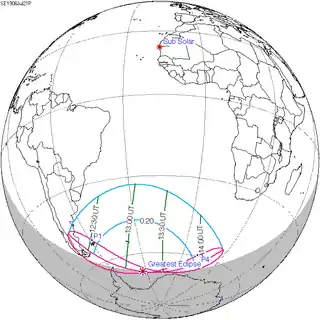 Partial |
120 | January 14, 1907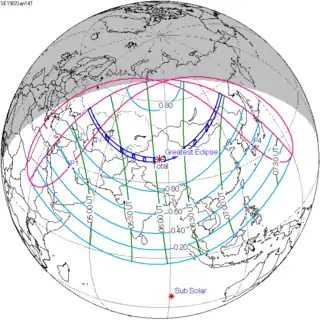 Total | |
| 125 | July 10, 1907 Annular |
130 | January 3, 1908 Total | |
| 135 | June 28, 1908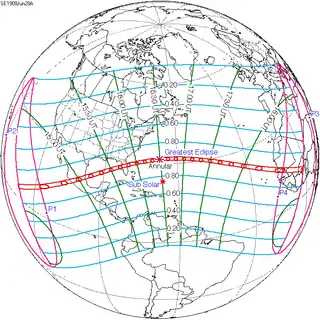 Annular |
140 | December 23, 1908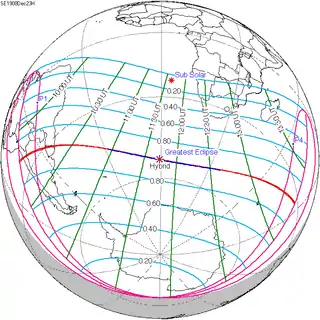 Hybrid | |
| 145 | June 17, 1909 Hybrid |
150 | December 12, 1909 Partial | |
External links
- van Gent, R.H. "Solar- and Lunar-Eclipse Predictions from Antiquity to the Present". A Catalogue of Eclipse Cycles. Utrecht University. Retrieved 6 October 2018.
- Earth visibility chart and eclipse statistics Eclipse Predictions by Fred Espenak, NASA/GSFC
.jpg.webp)
